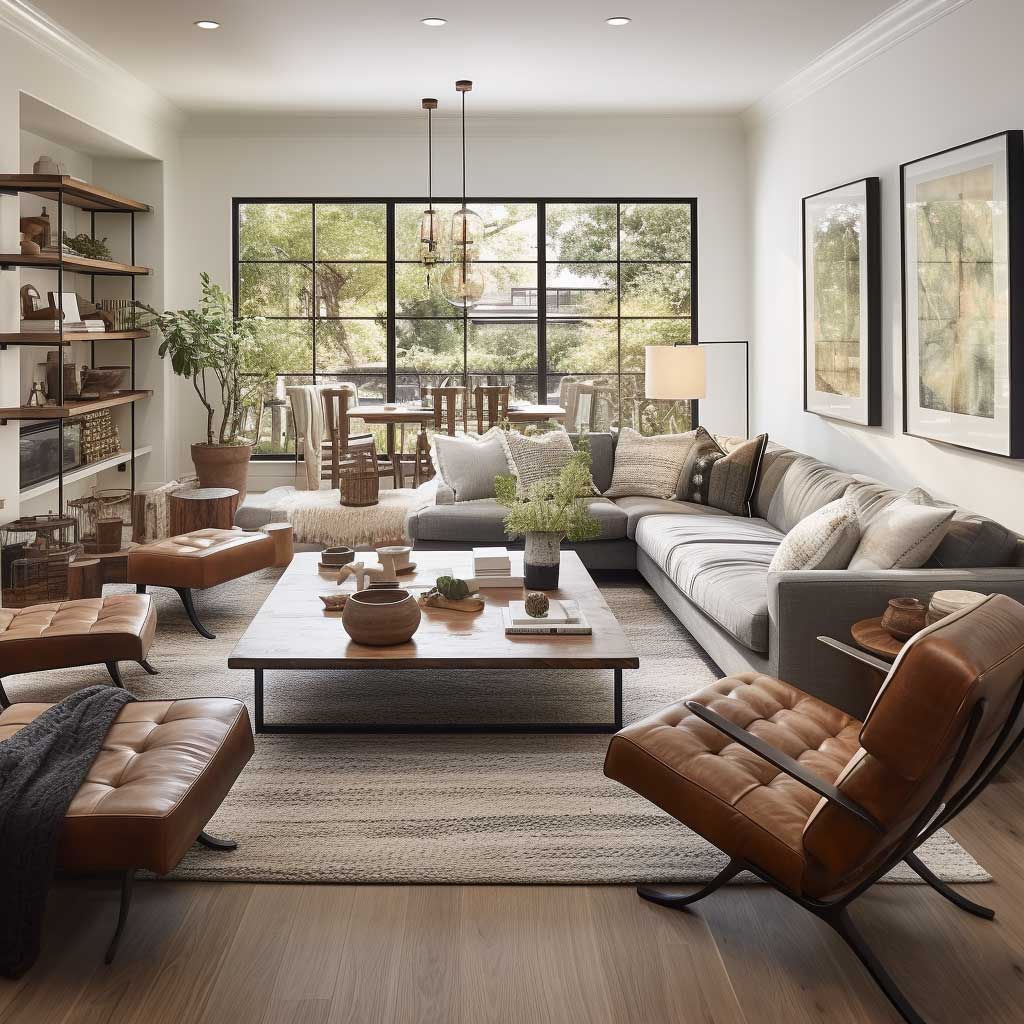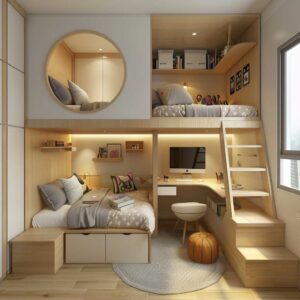Long living rooms offer a unique design challenge. While they provide ample space, they can sometimes feel narrow or confined. However, with the right design strategies, you can transform this elongated space into a room that feels spacious and inviting. Dive into these three design hacks that are not only functional but also elevate the aesthetics of your space, making the most of long living room ideas.
Strategic Furniture Placement for Long Living Room Ideas




One of the most transformative elements in interior design is furniture. Its placement can make or break the aesthetics and functionality of a space. For homeowners grappling with the challenge of decorating elongated spaces, strategic furniture placement becomes paramount. Let’s delve into how strategic furniture placement can redefine long living room ideas, making the space feel both expansive and cozy.
Furniture is more than just functional pieces in a room; they are the building blocks of a space’s design narrative. In long living rooms, the placement of these blocks can significantly influence the room’s perceived width and flow.
- Centralized Seating: Instead of pushing all furniture against the walls, which can emphasize the room’s length, consider centralizing seating arrangements. This creates intimate conversation areas and leaves space around the room’s perimeter, giving an illusion of width.
- Use Multi-functional Furniture: Ottomans, nesting tables, and modular sofas can be moved around easily, allowing for flexibility in design. This adaptability is especially beneficial for long living rooms where space needs to be optimized.
- Vertical Emphasis: Tall bookshelves, vertical wall art, or high-backed chairs can draw the eye upwards, breaking the room’s elongated feel. By emphasizing the height, you can counteract the tunnel-like effect that long living rooms often have.
- Diagonal Arrangements: Placing some furniture pieces diagonally, like an accent chair or a side table, can break the room’s linear appearance. This unexpected placement can make the room feel wider and more dynamic.
- Rugs to Define Spaces: In long living rooms, using multiple rugs can help demarcate different zones, like a reading nook or a conversation area. This segmentation can make the room feel like a collection of cozy spaces rather than one elongated area.
- Flow and Traffic: It’s essential to ensure that furniture doesn’t obstruct pathways. Maintaining clear paths for movement can make the room feel more open and accessible.
Strategic furniture placement is a game-changer for long living room ideas. By understanding space dynamics and playing with furniture arrangements, homeowners can transform their elongated living rooms into spaces that exude warmth, functionality, and style.
Illusionary Techniques in Long Living Room Ideas




The magic of interior design lies in its ability to transform spaces, not just physically but also perceptually. For those exploring long living room ideas, illusionary techniques offer a treasure trove of possibilities. Let’s uncover how illusions can create a sense of width and spaciousness in elongated living rooms.
The power of illusion in design is profound. It can make small spaces feel grand and narrow rooms feel wide. Here’s how:
- Mirrors: One of the oldest tricks in the book, mirrors can make any space feel larger. In long living rooms, a large wall mirror can instantly double the room’s perceived width. The reflections create a sense of depth, making the room feel more expansive.
- Lighting: Strategic lighting can work wonders. Uplights, for instance, can draw the eye upwards, emphasizing the room’s height. Similarly, using multiple light sources, like floor lamps, table lamps, and wall sconces, can break up the room’s length and create pockets of warmth.
- Wall Art: Large horizontal art pieces or photo galleries can draw the eye sideways, emphasizing the room’s width. Conversely, vertical art pieces can break the monotony of a long wall, making the room feel more balanced.
- Transitional Elements: Using room dividers, open shelving, or semi-transparent curtains can segment the space without fully closing it off. These elements provide visual breaks, reducing the room’s elongated feel.
- Color Techniques: Light colors naturally make a space feel open and airy. However, playing with wall colors, like having one accent wall in a darker shade, can create depth, making the room feel wider.
- Floor Patterns: Horizontal floor patterns, whether in tiles, wood, or carpets, can emphasize width. Similarly, diagonal patterns can break the room’s linear appearance, adding dynamism and perceived spaciousness.
Illusionary techniques are invaluable tools for those exploring long living room ideas. By manipulating perceptions, these techniques can transform elongated spaces into rooms that feel spacious, balanced, and inviting.
Color Palette Magic for Long Living Room Ideas




Color is a powerful design element, capable of evoking emotions, setting moods, and even altering spatial perceptions. For those navigating the challenges of long living room ideas, the right color palette can be transformative. Let’s explore how color can work its magic in making elongated living rooms feel wider and more inviting.
The psychology of color is a vast and fascinating field. In the context of long living rooms, color can be a strategic tool to counteract the room’s narrowness.
- Light and Neutral: Light colors, such as whites, creams, and pastels, naturally reflect light, making spaces feel open and airy. A neutral palette can give the room a serene and spacious vibe.
- Accent Walls: While light colors are recommended, having one darker accent wall can create a sense of depth. This contrast can make the room feel less linear and more dimensional.
- Ceiling and Floor Colors: A lighter ceiling can draw the eye upwards, emphasizing height. Conversely, a darker floor can ground the space, providing a sense of balance. This vertical color gradient can counteract the room’s elongated feel.
- Furniture and Decor: The color of furniture and decor pieces can also influence spatial perceptions. Light-colored furniture can blend with the walls, making the room feel more open. Brightly colored decor pieces can act as focal points, breaking the room’s length.
- Patterns and Textures: While color is essential, the patterns and textures chosen can also influence perceptions. Horizontal patterns, whether in wallpapers, rugs, or upholstery, can emphasize width.
- Transitional Colors: If the living room opens to another space, like a dining area, using transitional colors can create a cohesive look. This flow of color can make the entire area feel more expansive and unified.
The magic of color palettes in long living room ideas lies in their ability to alter perceptions and evoke desired emotions. By choosing the right shades, patterns, and combinations, homeowners can turn their elongated living rooms into spaces that feel spacious, cohesive, and aesthetically pleasing.
Conclusion
Making a long living room look wider is all about perception, placement, and palette. By strategically placing furniture, using illusionary techniques, and selecting the right colors, you can transform a narrow space into one that feels spacious and welcoming. Embrace these design hacks and watch your long living room come alive with possibilities.












